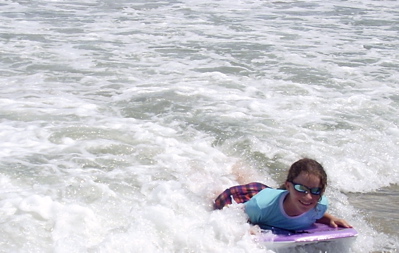
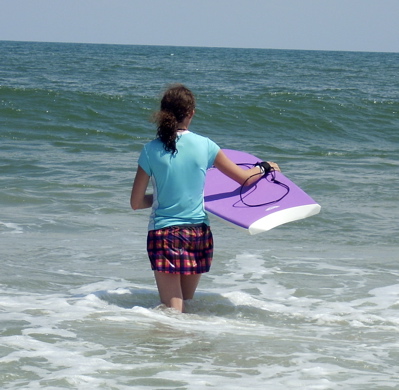
| Route 66 | Cities | Beaches |
 |
 |
|
| Bodyboarding, locally referred to as "boogie boarding," is a great introduction to surfing. Fundamentals are the same. You have to learn to read waves, time your catching of the wave, move forward enough on the board to keep on the front edge of the wave but not so far as to tip the board too far down, learn to slide right or left across the break of the wave so as to prolong your ride as long as possible, and survive sometimes spectacular wipeouts. All of these skills make learning to surf on the full size boards much easier. But bodyboards also offer other advantages. Because they're shorter, they can ride a wave too small for full size boards, so on days when the surf is quiet, leave your surfboards on the rack and just bring the bodyboards. Kids too young or too small for surfboards can easily manage a bodyboard. (Locals scoff at this, pointing to Hatteras grade school kids who handle small surfboards with ease. The difference is those kids grow up on the beach and can learn by trial and error over several years of practicing every day, unlike kids who get to the ocean once a year on vacation.) | 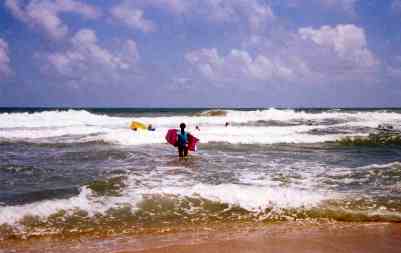 |
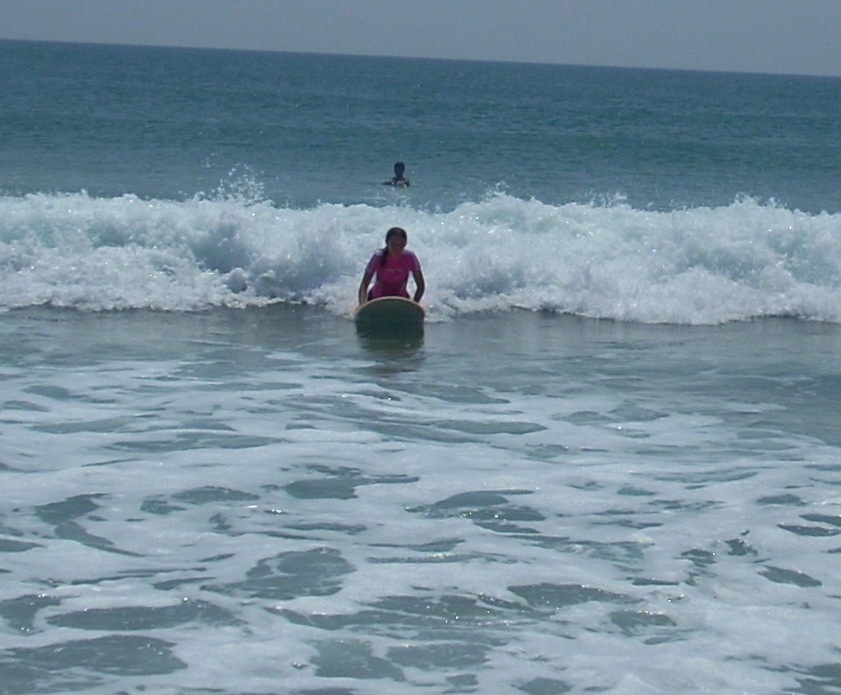 |
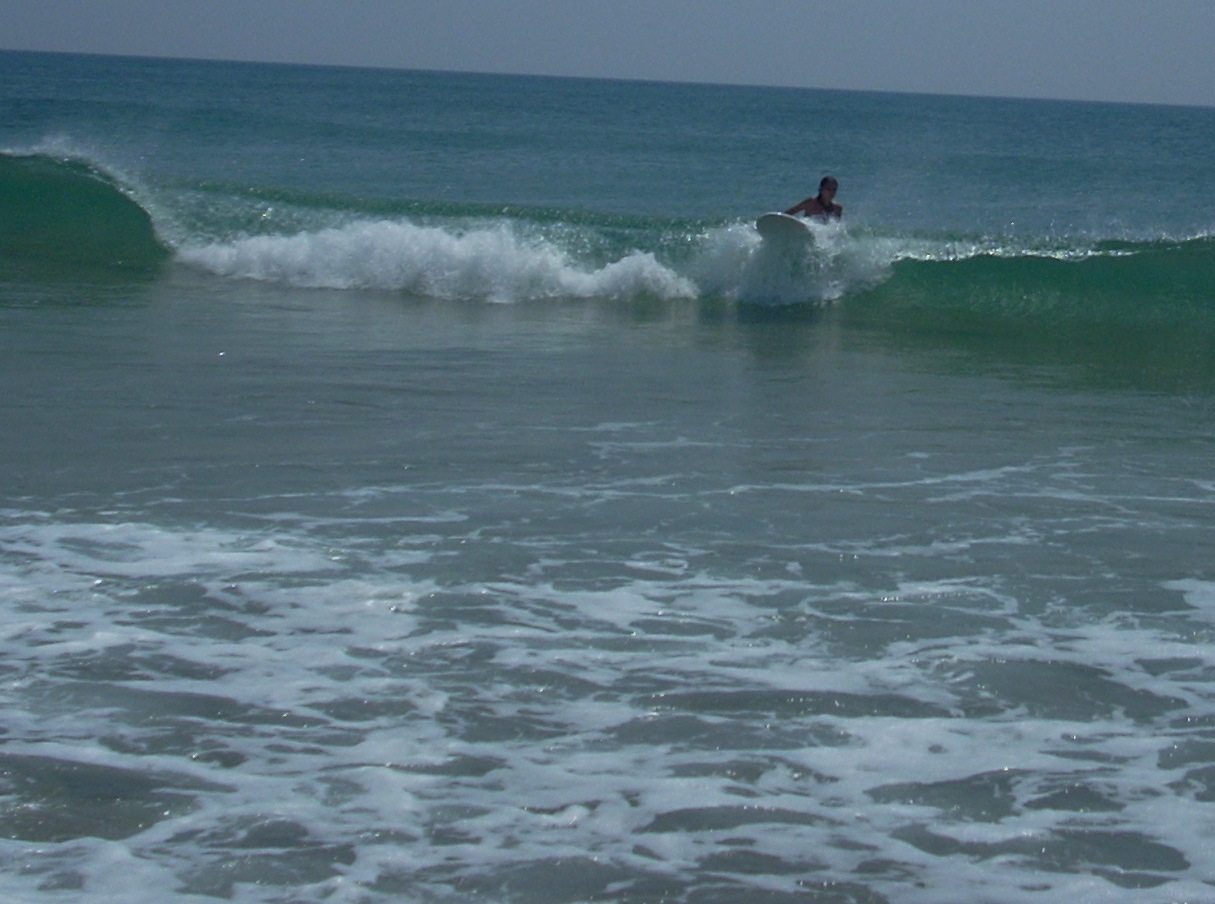 |
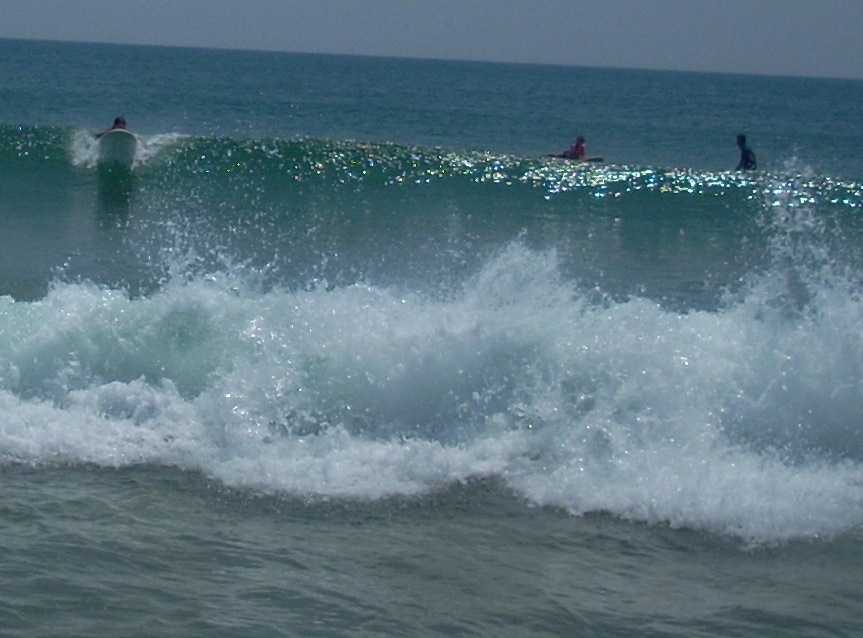 |
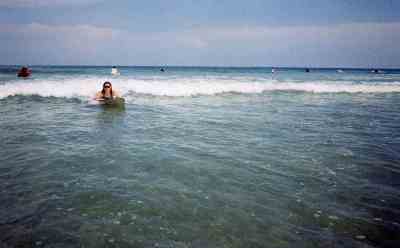 |
We like to move all our kids up to bodyboarding as soon as they've had a little experience tubing, then move them up to surfboards by the end of the first week. Rent the boards the first time you come. Do not buy any until you've had a few lessons and spent several days riding them. You'll see $20 styrofoam boards in groceries and general stores, but avoid them. Those are toys. A serious bodyboard starts at $40, good ones cost $100, and the advanced ones can run as much as $400. They are a piece of sports equipment just as serious as a backpack, canoe or set of skiis. The good ones are laminated for added strength, arched like soles of good shoes, edged and railed for proper tracking. Advanced models have adjustable tracks and fins and multiple rails built inside the core to support riders kneeling or standing. We recommend Fox Watersports in Buxton for either rentals or purchases. |
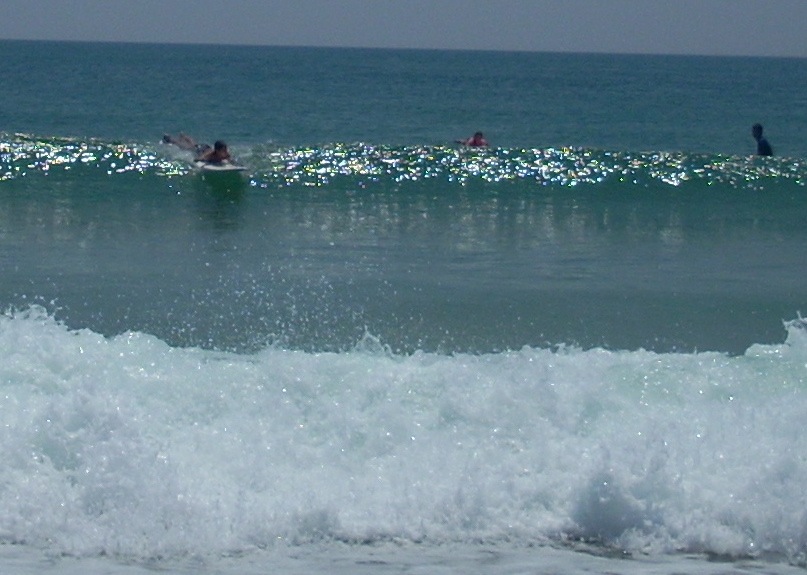 |
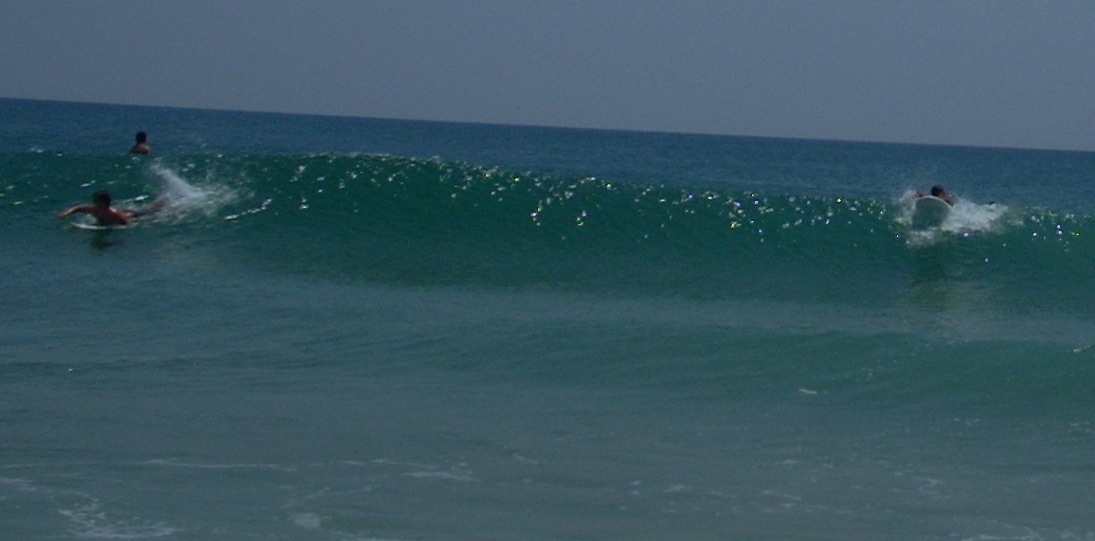 |
| There are a few precautions we recommend taking. They are a combination beach sense and sporting sense. First, buy the best sunblock you can find --- we like No-Ad spf 45 to 60---put it on generously, then reapply it every two hours. Second, wear good sunglasses with flotation strap. Sometimes you will see us without sunglasses in photos. That is because we take them off so you can see our faces, then put them back on immediately after. But the sun being reflected by the water and the sand can do serious damage to skin and eyes. Third, consider using one of the surfing watershirts. These are not cotton, but quuick drying synthetics. You will be continuously jumping on your board and moving back and forth across it while maneuvering against the waves. You may develop a rash from all that friction. The shirts prevent that. Fourth, make sure your boards have wrist straps firmly attached. These keep the board from getting away from you when you are knocked off it. Chasing a board down is not fun, plus it can injure someone by hitting them at high speed. | 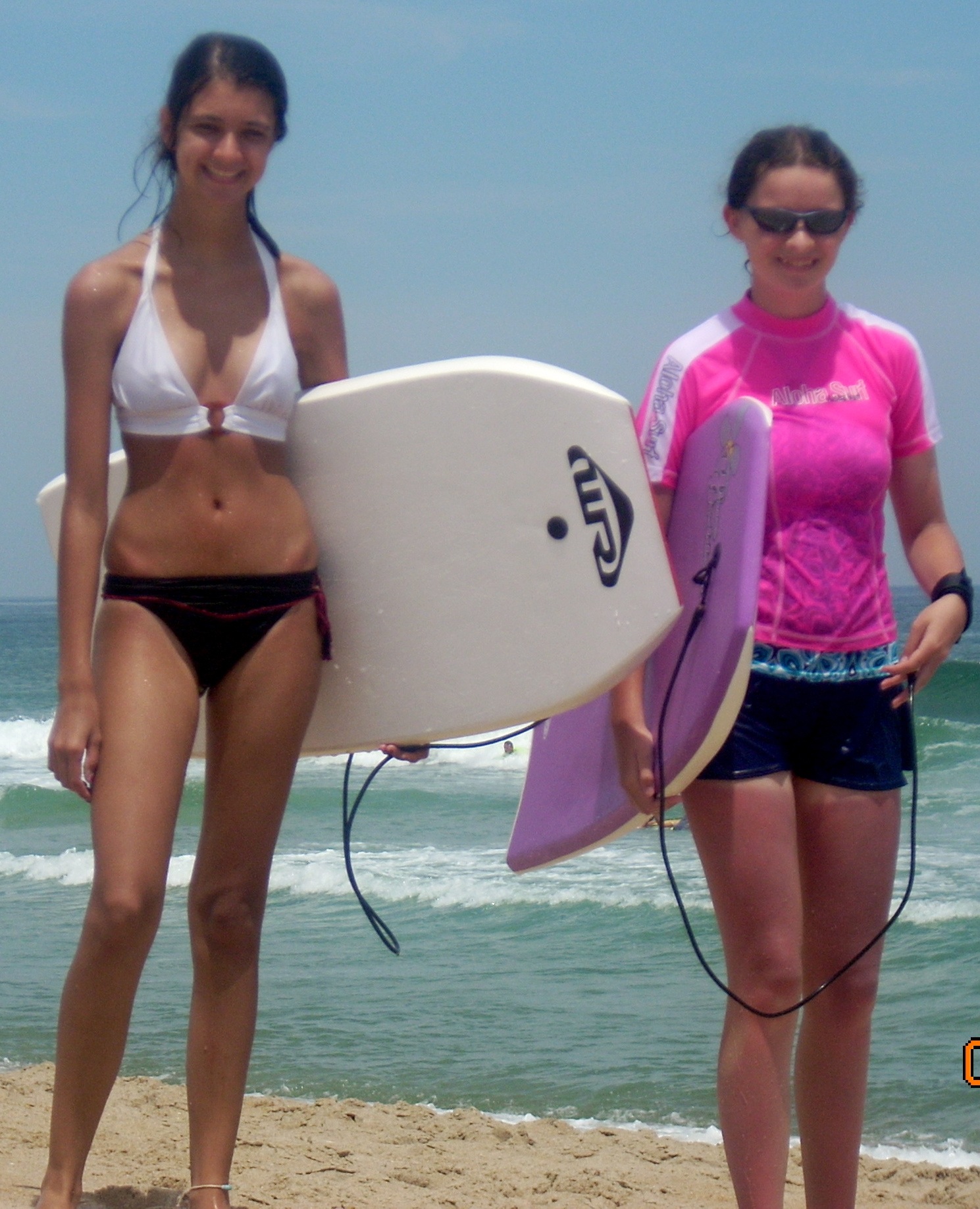 |
Fifth, you are responsible for everyone between you and shore. It is not their job to get out of your way. It is your job to make sure neither you nor your board hits anyone. The best way to avoid the problems is to move up or down the bar until you are clear of swimmers. Then, make sure you are not catching a wave with another surfer directly inshore of you. Finally, if once you start your ride someone cuts in front of you, either swerve to the side or abort your ride. Sixth, bodyboarding is a very exhausting activity, and the adrenalin rush will often prevent you from realizing how tired you are becoming. But it is when you are tired that accidents happen. Therefore, at least once an hour, come out, dry off, sit down, eat and drink something, and stay off your feet for about 10 minutes. When you're out of the water, do not drag your board across the sand. Do not sit or lay on it. And either put it under a beach umbrella or cover it with a towel to protect it from the sun's rays, which will quickly degrade the plastic. |
| And, like skateboarders and snowboarders, the best bodyboarders can do amazing things. The good ones can rise to a kneeling or even standing position, leap off the wave for aerial tricks, surf back against the wave, and surf across the wave inside the curl (right and below left). If there's a competition while you're on the island, be sure to go. You'll see hot doggers doing 360s and inverts and handstands. The best time to see all this is just after a storm kicks up huge waves. Hurricanes and depressions going up the middle of the Atlantic are great. |  |
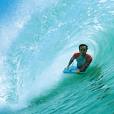 |
After a few years, if you become pretty good
and like the sport, you can buy your own bodyboard, put it on your roof
rack and take it home. If you assemble a group of bodyboarders
you may be able to talk your hometown wave pool into allowing special
bodyboarding days. |
|
|||
|